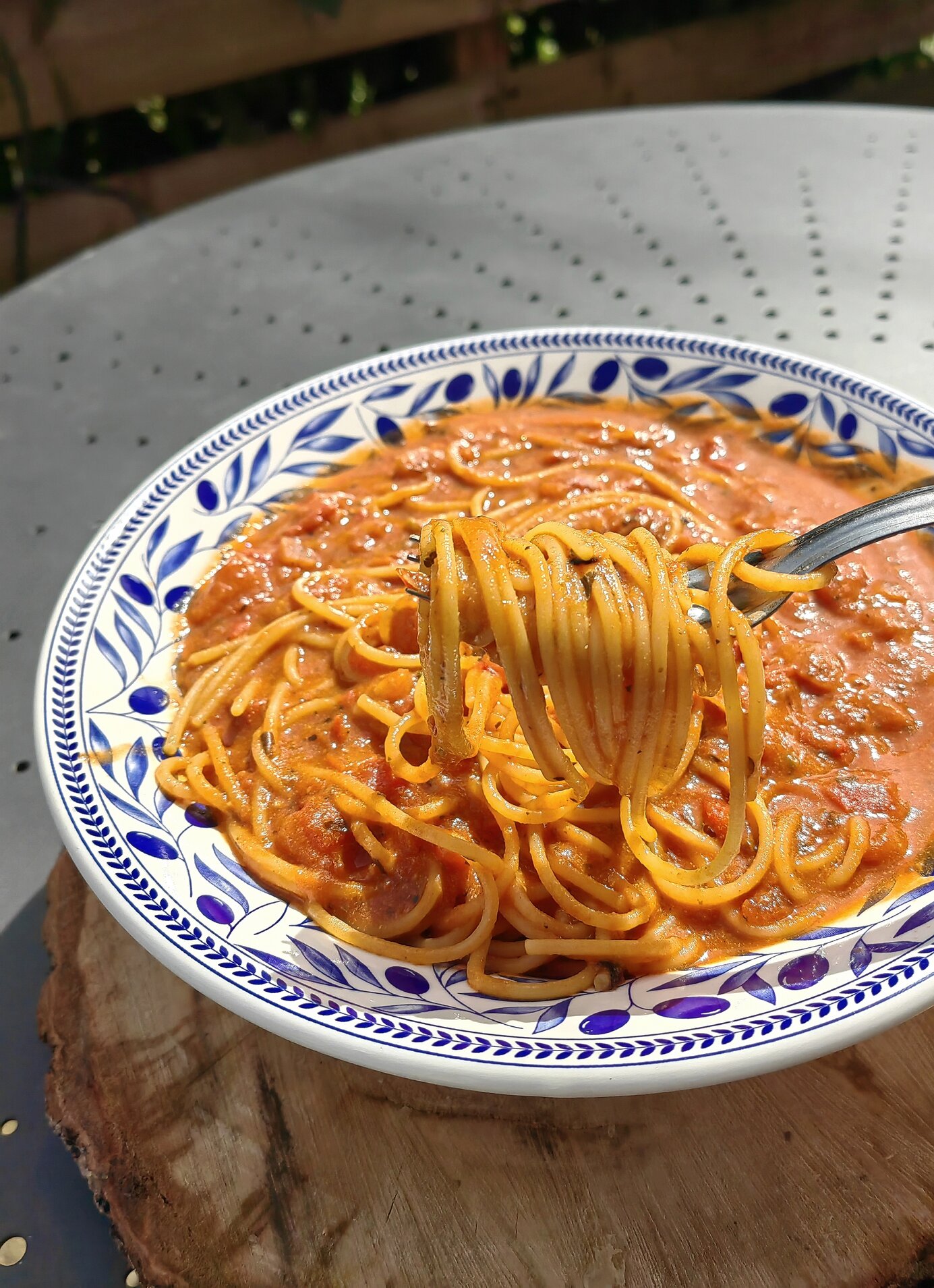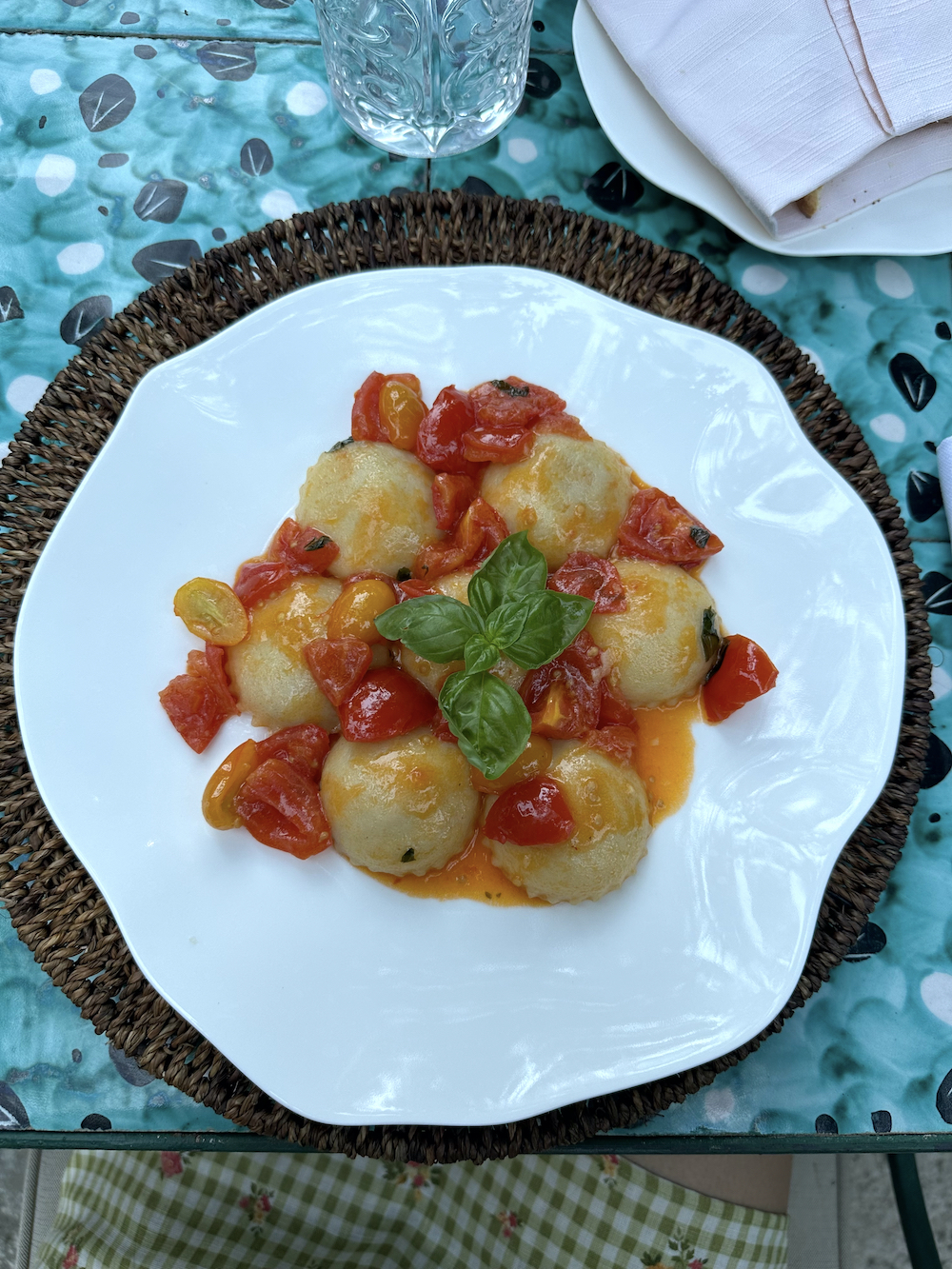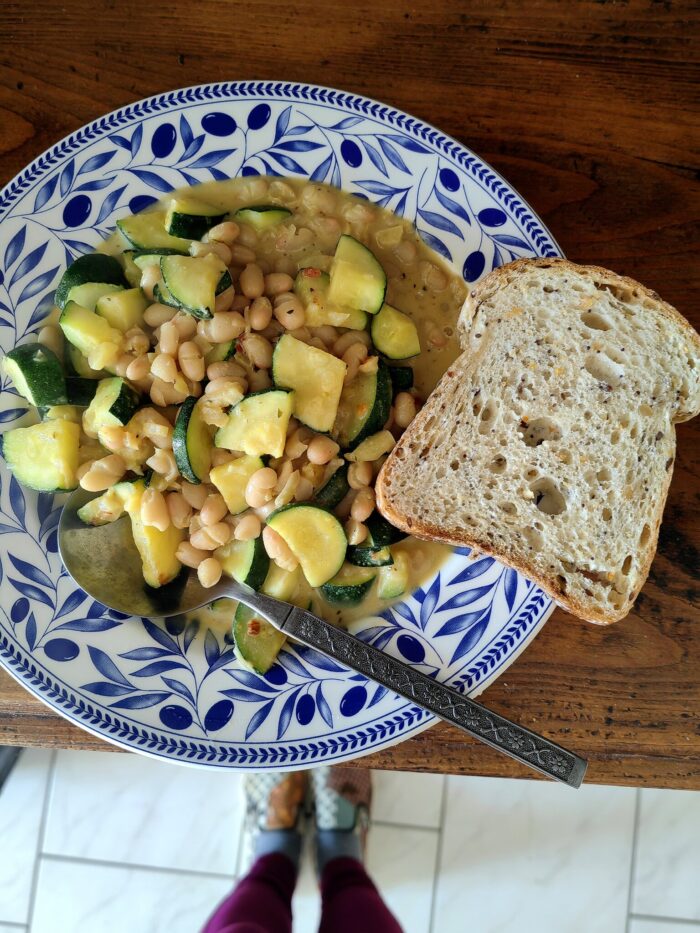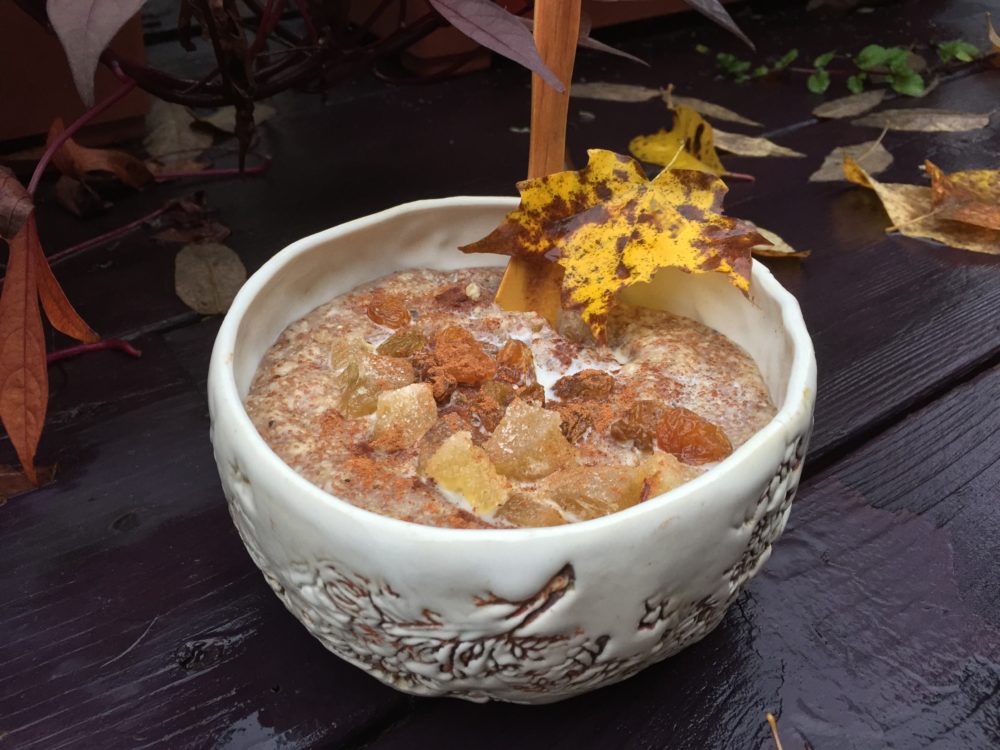I love visiting the farmers market or grocery store in the cooler months because the autumn harvest looks so festive. The sugar pumpkins, miniature gourds, and different types of squash all look like fall decor rather than food. Though pumpkin is technically a squash and seems to get all of the attention during October, there are plenty of other varieties that are just as mildly sweet and versatile. Butternut, spaghetti, and acorn are all types of winter squash that keep well during the cold weather. Stored in a dry, cool place, these can usually last for at least a month after picked up from the market.
Winter squash is naturally low in calories and fat and contains many nutritional benefits. The bright orange/yellow color is a visual indicator of the high vitamin A content from beta carotene. It also contains vitamins C & E, both of which are beneficial to your skin, as well as immune system. Magnesium, manganese, and potassium are also present in winter squash. These minerals have been proven to improve depression and anxiety when eaten regularly, extremely beneficial in the colder months when many people seem to get "seasonal depression".
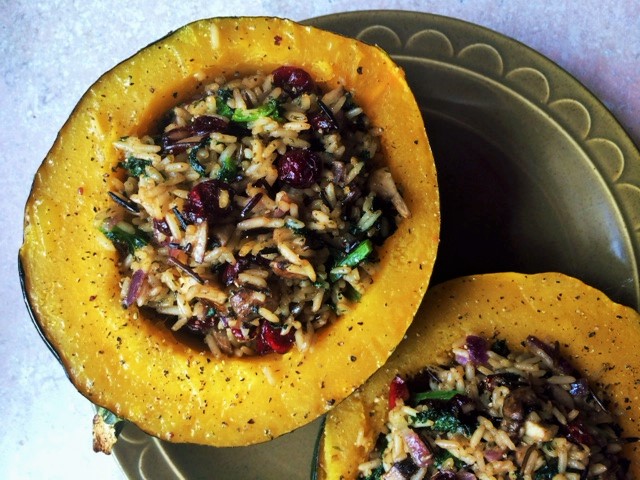

- 1 acorn squash
- 1 cup wild rice
- 1 clove garlic
- 1 cup, diced mushrooms
- 1/2 cup, dices onions
- 1/2 cup dried cranberries
- 4-5 big leaves, shredded kale
- 1/4 tsp ground sage
- 1 tablespoon olive oil
- 1/4 tsp thyme
- 1/4 tsp salt
- 1/4 tsp pepper

Directions
1. Set your oven to 400 degrees and let it preheat.
2. Carefully cut the acorn squash in half using a very sharp knife, then scoop out the seeds. Score the inside of each half with a knife in a criss-cross pattern and sprinkle with salt and pepper. Put each half face down on a baking sheet with about 1/4 inch of water on the bottom so the squash doesnt stick or dry out in the oven. Roast for about 50 minutes.
3. Bring 1 1/2 cups water to a boil in a pot for the rice. Begin cooking the rice while the squash roasts.
4. In a saute pan, heat the olive oil and then add the mushrooms, onions and kale. Leave them on low heat, covered, so the kale can wilt while the veggies cook.
5. When the rice is done cooking, add the veggies to the pot as well as the dried cranberries and spices. Stir to incorporate everything together.
6. When the squash is done roasting, remove from the oven and stuff with the rice mixture.
Most of the ingredients can be substituted for whatever you have on hand. Quinoa, barley, or any other grain can be used in place of the wild rice, and spinach, arugula, etc. can be used in place of the kale.
Dont forget to save the seeds you scooped out to roast with sea salt just as you would pumpkin seeds!

